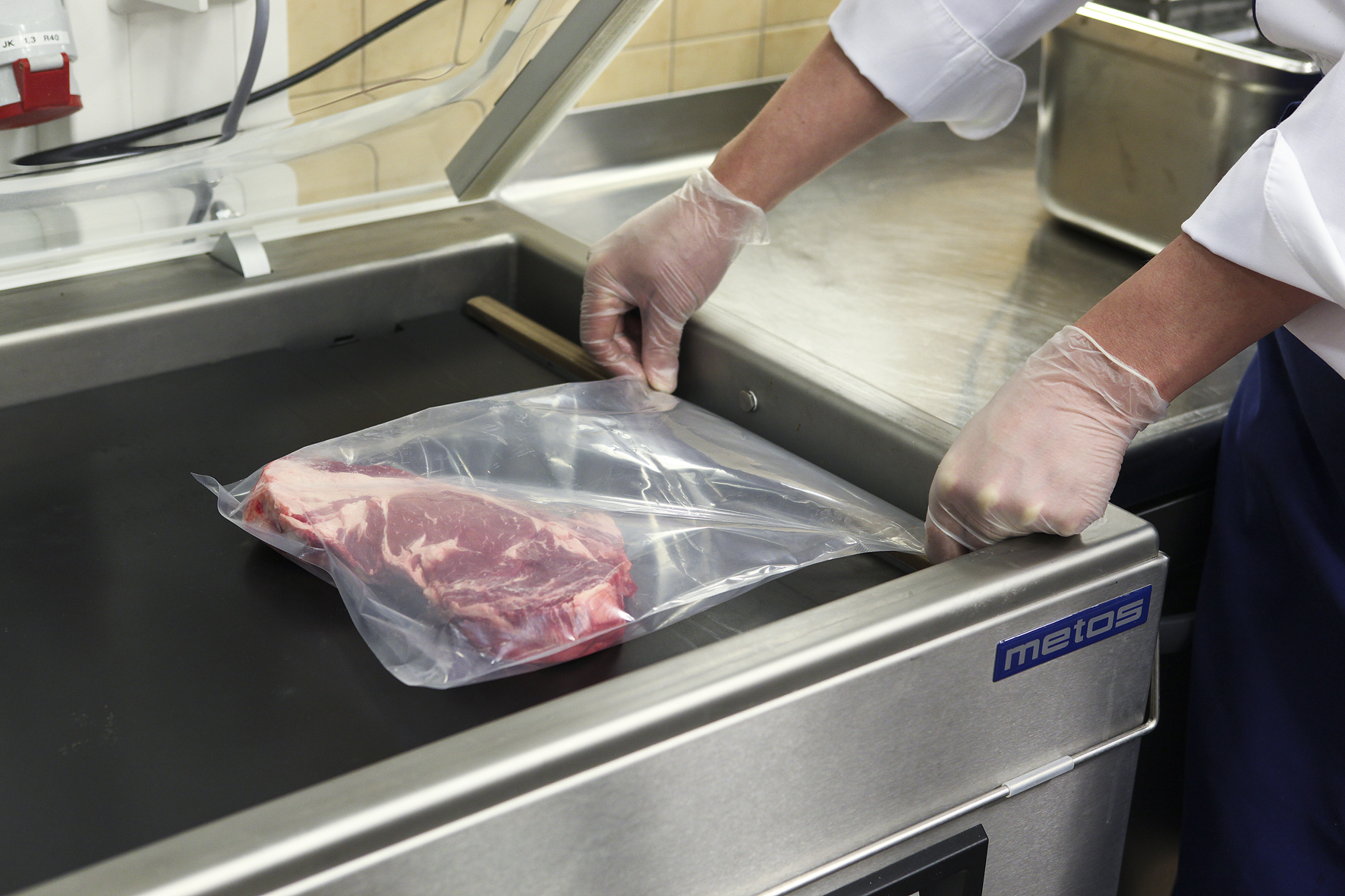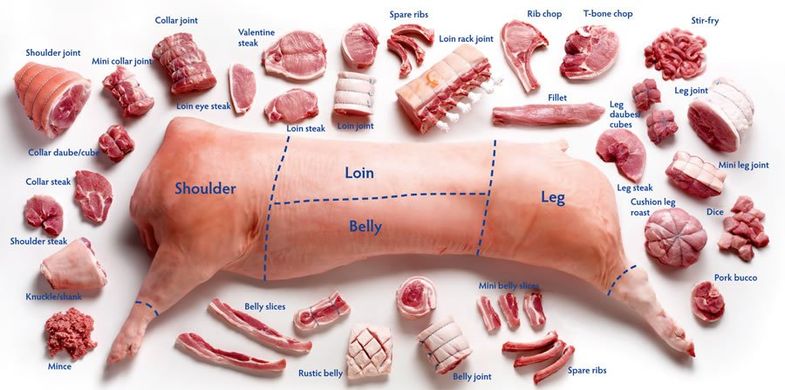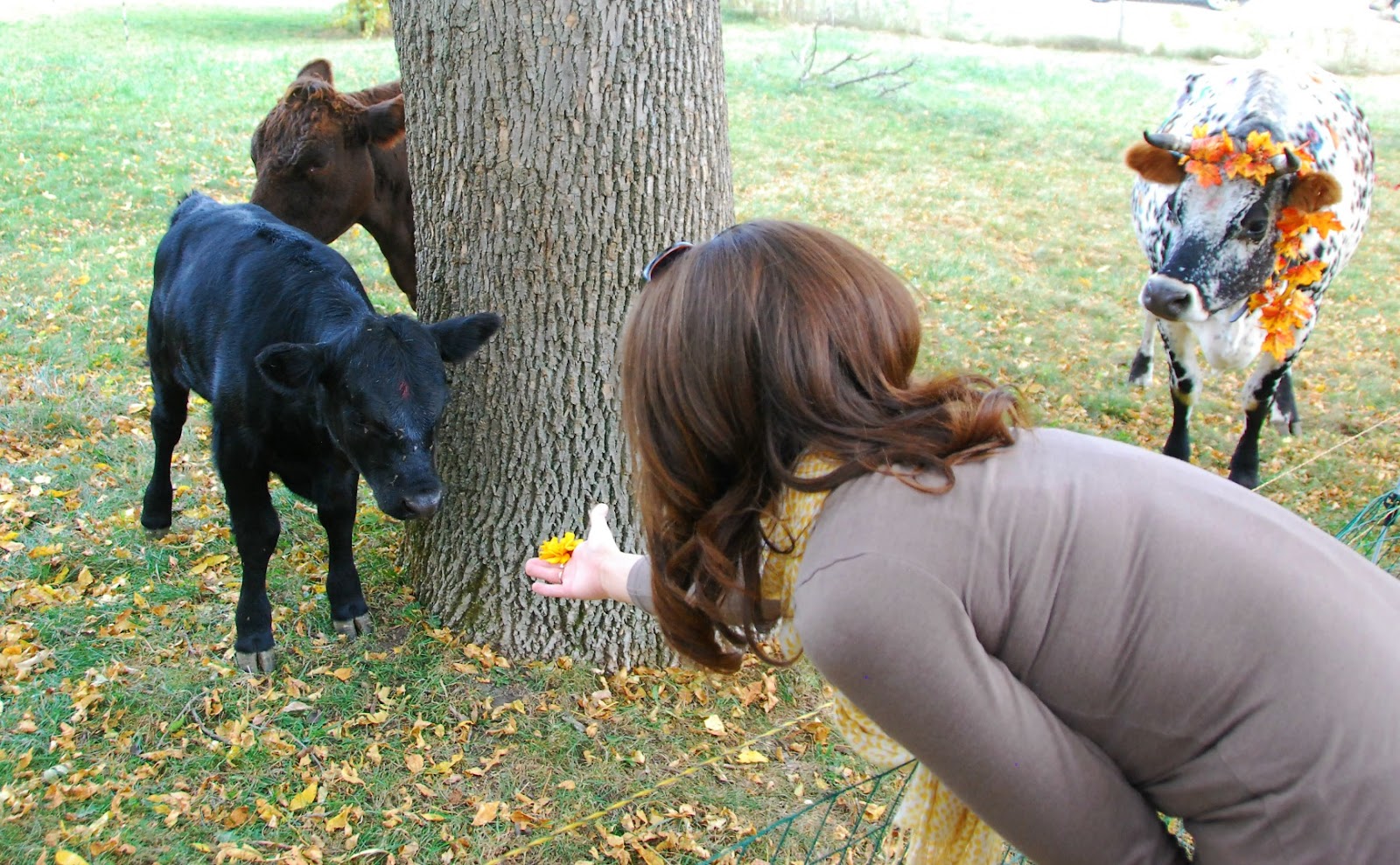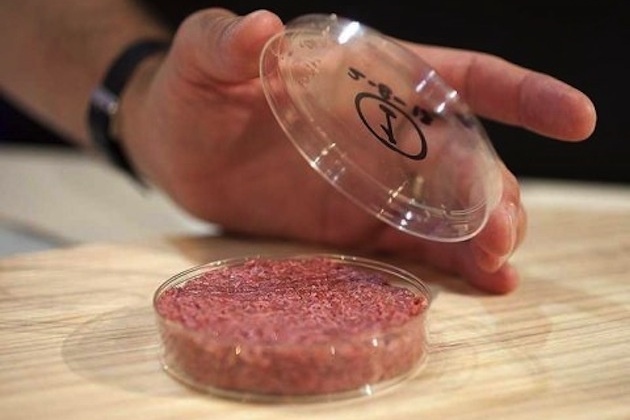Last week Finless Foods opened their new lab in Emeryville, California, after raising $3.5 million in a seed round that moves them from their research and development phase towards commercial production of cellular fish products. Each day we inch closer to the mainstreaming of ‘clean meat’, protein grown from the cultured cells of an animal that tastes, looks and smells identical to traditional meat. Indeed, for all intents and purposes this is meat, but unlike our current burgers, fish fillets and sausages, it doesn’t involve the poor welfare and early death of the animal, the resource-heavy production process and devastating environmental damage, nor the health risks like faecal contamination and high cholesterol. Yet despite these myriad benefits, many animal rights advocates are concerned that having one’s meat and eating it is rather like getting blind drunk without the moral hangover. With animals still being used in the production process, the essential ideologies that allow us to exploit animals for human use in all areas of modern life remain unchallenged. So will using animals for meat with a clean conscience perpetuate cognitive dissonance around the origin of our food? Or – as I will argue here – are there actually opportunities in the transition to clean meat for people to make new, compassionate connections?
What’s wrong with using animals for clean meat?
In the early development phase of culturing meat, scientists used a product called foetal bovine serum (FBS), a byproduct made from cow foetuses. The foetuses are removed from cows at slaughter and drained of blood, which is then refined to make the serum. Not very vegan, right? However, most companies have now switched or are switching to plant-based serums, and it is safe to assume that any commercial product will not have used FBS. So if no animal has to be harmed to make clean meat, what could possibly be wrong with it? Well, philosophers Gruen and Jones[1] discuss how categorising a being as edible renders him or her a consumable commodity. When we allow animals to be bought and sold on the market, we maintain a certain relationship with them and value them in a certain way – a different way to how we think of our own human non-edible bodies. After all, nobody has seriously suggested that we grow meat from our own human cells. Activist Joan Harrison[2] believes that while clean meat may end factory farming, “it will do nothing to end the public’s identification of animals with food. Indeed, it will likely confirm this”. Similarly, philosopher Ben Bramble worries that if humanity switches to clean meat for the ‘wrong reasons’ – because of benefits for human health or the environment – we will not address the moral issue at stake in how we treat animals[3]. JUST plan to launch an avian cultured meat product by the end of the year, a replacement for foie gras paté which is now illegal in many parts of America. Sitting down to taste the prototype paté for his book Clean Meat, vegan Paul Shapiro experienced an “intense” visceral sense of revulsion, before pushing this aside and savouring the flavour, which brought “an amount of pleasure I’ll confess I was a little embarrassed to admit”. But shouldn’t we be listening to that gut response, the one that tells us it’s wrong to eat something that looks and tastes like a product of immense suffering, no matter how pleasurable?

Clean meat dissenters are also concerned that switching to cellular meat that looks even less like a dead animal than existing meat products will encourage consumer disconnection from that animal. In her essay ‘The Roots of My Indigenous Veganism’, Margaret Robinson describes how she was brought up on Styrofoam-packaged supermarket meat, “clean, almost medical… It’s difficult, seeing a chicken breast, to imagine it was ever part of living being”[4]. It was only when the reality of meat-eating became visible to her at live markets that the thought “I’m eating dead animals” was made conscious. If one eats clean, slaughter-free meat, this reality is never made visible; Robinson’s epiphany, powerfully described below, never comes:
I put this dead fish on my cutting board and started trying to dismantle it, and I was soon elbow deep in what felt like a fish autopsy. I suddenly realised, “This isn’t meant to come apart.” That is, they don’t have “fillets”, they have muscles. I realised the fish’s body was designed for its own life, not for my chowder.
Cultured meat producers can’t yet grow a steak, muscles or breast, only ground mincemeat-like products. This makes it easier to ignore the aspects of meat – the veins and tendons – that normally remind one that it once belonged to an animal. Robinson tells us that “Not eating meat began to sensitize me to things I had been doing in order to make eating meat easier… it made me realise how I had separated myself from other animals, and created walls in my mind to enable me to see animals as objects – basically meat on legs”. It is stopping eating meat that prompts her to register the immorality of consuming milk and cheese. The advent of clean meat means that when people decide to stop eating ‘real’ meat for environmental or health reasons, they will have a ready substitute. Because they won’t have to stop eating meat, they are less likely to make Robinson’s wider moral connections.

Are aspirations for a genuinely vegan society unrealistic?
Of course, the argument above only works for people who are susceptible to empathic change. The locavore movement where people kill and butcher their own meat, hog roasts at weddings, the celebration of nose-to-tail cooking – this all contradicts the idea that connecting meat with a dead animal leads to a ‘Eureka!’ moment. Impossible Burger did research to show that people really like the ‘bloody’ aspect of the meat burger, leading them to create their famous bleeding patty.[5] These aren’t people who are going to have an epiphany when they connect meat with dead animal, because they already do this and value the taste more for it. The reality is that despite recent growth, the percentage of society who is vegan is still very small: 7% in the UK, 6% in the US. While we wait for these numbers to creep up, 56 billion animals are suffering and dying each year. White and Springer conclude that it is “painfully obvious” that the process of conscious-raising has not resulted in widespread action to boycott animal products[6] despite many people wanting to do the right thing. A 2015 Gallup Poll showed 32% of Americans believe ‘animals deserve the exact same rights as people to be free from harm and exploitation’ so why have only 5% of these people gone vegan? Most often it seems to be a question of willpower. Journalist Niall Firth, “painfully aware” that he should reduce how much meat he consumes for environmental reasons, nonetheless confesses that the thought of trying a vegan burger makes him feel “weak”[7]:
I love meat. I love the smell of it cooking, the sound of the sizzle. I love the fat dropping onto the coals beneath a barbecue, the deep-pink “give” of a medium-rare steak, the smoke, the blood.
For people like Firth, clean meat offers a realistic alternative that significantly reduces harm.

There are also people who are never going to associate meat eating in itself with immorality. Gruen and Jones describe how underlying the ‘nose-to-tail’ food movement is an increased awareness of the destructive nature of industrialised meat production “coupled with a sentimental nostalgia for a time when a majority of Americans were farmers and crafts persons living closer to the rhythms of the natural world”[8]. These “compassionate carnists” are not going to be swayed by a vegan argument to give up meat altogether, but they might turn to clean meat as a better type of ‘humane meat’ (provided the ‘unnatural lab-meat’ argument is dispelled, as discussed shortly). Given that animals in smaller operations sometimes suffer more due to lack of consistent veterinary care, practices like debeaking, castration and tail docking are still common, and all organic animals are still subjected to a terrifying slaughter, it can be argued that the ethics of ‘humane’ meat aren’t so different to the intensively-farmed kind. Cultured meat offers a more moral alternative for those that already buy into the ethics of the humane meat model.
Might losing the moral guilt encourage people to learn more about animal suffering?
What if removing the guilt associated with eating meat is a positive thing, increasing rather than decreasing willingness to take moral responsibility? A huge aspect of cognitive dissonance is people’s reluctance to confront suffering because they don’t want to acknowledge their own culpability. If we are no longer consuming cheap intensively-farmed meat or any slaughtered animal flesh, we are no longer culpable – so we should be in a more open position to make connections between our food choices and animal suffering. In a 2013 workshop, it was found that the idea of cultured meat immediately triggered people’s unhappiness with intensive farming[9]. Participants warmed to cultured meat as a possible solution to the suffering of animals, made instead from cells taken from ‘happy pigs’ in urban farms or backyards. In fact, clean meat was experienced as a remedy against our alienation from food[10]. Currently people actively avoid finding out too much about intensive farming and other animal uses because they don’t want to feel guilty about what they eat. If they’re no longer ‘guiltily’ supporting these processes, there is less of a barrier to finding out the truth about how meat is normally produced.

There are other ways in which cultured meat may encourage more transparency about animal production. Consumer concern around the ‘naturalness’ of meat grown in a lab is often cited as a huge barrier to widespread public acceptance of clean meat, and its processed nature has also deterred vegans (Pat Thomas writes in The Economist “It’s a fantasy of food without history, without effort, without context, engagement or consequence”[11]). Yet consumer workshops around cultured meat in 2010 “generated mixed and uneasy thoughts and feelings, not only about cultured meat, but at least as much about ‘normal’ meat.”[12] The remark that cultured meat is unnatural backfired, causing people to question how natural our present way of making meat really is. So actually this ‘fantasy food’ will put real meat products into context, engaging consumers with the consequences of their current meat habits. Furthermore, clean meat companies are going to need to counter omnivores’ concerns by exposing ‘normal’ farming practices as inherently ‘unnatural’ in their marketing, in the same style as plant-based Beyond Meat who created a short film showing their production process in direct contrast to that of traditional meat (including the slaughterhouse). When Discover magazine interviewed the founder of one of the first cultured meat companies, Jason Matheny, in 2005 he stated “There’s nothing natural about a chicken that’s given growth promoters and raised in a shed with ten thousand others. As consumers become educated, a product like [cultured meat] would gain appeal.”[13] In fact, it may be the other way around: as the clean meat product gains appeal, for health or environmental reasons, consumers become educated on the moral issues too. The company Real Vegan Cheese are taking marketing to the next level in terms of doing moral good, using cheese made from the synthesised milk of narwhal whales to raise awareness of ocean health.
A more honest direction for the meat industry?
On the flipside, traditional meat companies might have to reinsert the slaughterhouse into their own marketing so as to differentiate their ‘authentic’ product from cultured food. Debates around who should label cultured meat (the FDA who regulate drugs, dietary supplements and over 80% of the food supply – including other cultured products such as mycoproteins – or the USDA who regulate meat products from animal agriculture) could encourage people to think more about what meat actually is according to the USDA or FDA definition. For decades, marketing used by traditional meat producers has encouraged people to mentally separate the food product from the reality of the slaughtered animal, using evasive language and promoting the ‘hamburger’ as opposed to the ‘dead cow’. Now, the concept of the slaughterhouse must become central to their definition of ‘real meat’. The U.S. Cattlemen’s Association’s petition to the USDA asks the department to create a new rule that specifically defines meat as “the tissue or flesh of animals that have been harvested in the traditional manner.” Lia Biondo, director of policy and outreach for the U.S. Cattlemen’s Association, clarified that: “Harvested in the traditional manner means slaughtered at a slaughterhouse.”[14] Won’t this definition help reduce people’s cognitive dissonance? It is likely that the FDA will require additional labelling on clean meat packages, explaining that the ‘meat’ is not made how most consumers are used to, thus confronting them with exactly what they have been ‘used to’ – a cruel and brutal production process.

When slaughter is removed, our relationship with the farmed animals also changes. Perhaps keeping domestic cows, chickens and pigs in existence in a cruelty-free way is preferable to getting rid of these animals (as we know them) altogether. Van der Weele and Driessen[15] warn against an “abolitionist world in which urban vegans are completely separated from nature and from animals.” Clean meat could foster a greater human-animal bond, a deeper connection than would be possible if the farmer has to eventually slaughter the cow or chicken. We might see farmed animals valued far more closely to how we value dogs and cats in western society now, with similar protections. After all, having to slaughter an animal more often than not requires creating distance, not connectedness. Gruen and Jones describe the advice given by Original Country Girl, a DIY butcher who, writes on her blog: “The best advice is to always maintain a distance between you, and those intended for your dinner plate. This makes the butchering much easier”. If the animal doesn’t need to be slaughtered, there’s no need to avoid making a connection.
Does it really matter why people stop eating conventional meat, if it reduces animal suffering?
Even if it doesn’t invoke the possible moral connections explored above, the hard fact is that harm is reduced exponentially when we switch to clean meat. It is predicted that a piece of turkey muscle the size of a sesame seed could produce enough cultured turkey to supply the global annual meat demand for more than two thousand years. This isn’t a small reduction in animals used; it’s a greater than 99.99 per cent reduction. A single satellite cell from one turkey could turn into enough muscle to create over twenty trillion turkey nuggets[16]. In January, United Poultry Concerns founder Karen Davis stated in an online post that
The public mind already does not identify animals empathically with food. Most people who claim to love animals switch gears where eating is concerned. If ‘clean meat’ can significantly eliminate animals from being born into the misery and murder of meat, this, in my view, is 100% better than the present disconnection in most people’s minds between living creatures and cuisine, the result of which is a daily global animal holocaust.
Clean meat does not challenge wider ideologies of speciesism, but it does challenge some of the worst cruelties in these systems. Elisa Aaltola dismisses the idea that one must concentrate on broader moral wrongs rather than the immediate suffering of the victims, saying “surely the very wrongfulness of the relevant acts stems from the impact they have on individual beings”[17]. Clean meat is a weapon for non-idealists: it begins with the real injustice of the meat industry and offers a way to end this injustice. Discussing objections to ‘clean milk’, Josh Milburn argues that although the product might use animals in its production, this doesn’t involve the violation of animals’ rights not to be killed or suffer[18]. He considers that in this scenario, animals could be given similar rights as human workers.
Ultimately, cultured meat represents a major disruption to a system that has more victims in a single day than in all wars combined in human history. As we see traditional meat companies like Tyson Foods investing in these new products and helping consumers reframe their concept of ‘protein’, it’s hard not to be hopeful for a more compassionate, moral society.
[1] Gruen, L. & Jones, R. C. 2015. Veganism as an Aspiration. In: Bramble, B. & Fischer, B. (eds.) The Moral Complexities of Eating Meat. Oxford: Oxford University Press.
[2] Harrison, J. 2018. When Even ‘Clean Meat’ Isn’t Clean Enough. The Wall Street Journal.
[3] Bramble, B. 2017. Lab-grown meat could let humanity ignore a serious moral failing. The Conversation [Online]. Accessed December 14, 2017.
[4] Robinson, M. 2018. The Roots of My Indigenous Veganism. In: Matsuoka, A. & Sorenson, J. (eds.) Critical Animal Studies: Towards Trans-species Social Justice. Rowman and Littlefield International
[5] Adams, C. J. 2018. Burger with Carol J Adams. In: O’Sullivan, S. (ed.) Knowing Animals. Australasian Animal Studies Association AASA.
[6] White, R. J. & Springer, S. 2018. For Spatial Emancipation in Critical Animal Studies In: Matsuoka, A. & Sorenson, J. (eds.)
[7] Firth, N. 2018. The fake burger test: Could meat made of plants ever fool you? New Scientist.
[8] Gruen, L. & Jones, R. C. 2015. As above.
[9] Van der Weele, C. & Driessen, C. 2013. Emerging profiles for cultured meat; ethics through and as design. Animals, 3, 647-662.
[10] Van der Weele, C. 2017. Cultured meat, better than beans? In: Bailey, M. & Duncan, J. (eds.) Sustainable Food Futures: Multidisciplinary solutions. Routledge.
[11] Thomas, P. 2017. Does the Impossible Burger feed our desire to avoid necessary choices? The Ecologist.
[12] Van der Weele, C. 2017. As above.
[13] Shapiro, P. 2018. Clean Meat: How Growing Meat Without Animals Will Revolutionize Dinner and the World, New York, Gallery Books.
[14] Eveleth, R. 2018. Is Lab-Grown Meat Really Meat? Slate.
[15] Van der Weele, C. & Driessen, C. 2013. As above.
[16] Shapiro, as above.
[17] Aaltola, E. 2018. A critique of the case against empathy in animal ethics. In: Matsuoka, A. & Sorenson, J. (eds.)
[18] Milburn, J. 2018. Death-free dairy? The ethics of clean milk. Journal of Agricultural and Environmental Ethics, 31, 261-279.

Our meat-eating is a visceral, evolutionary thing and besides, there are an endless number of right causes to which one might apply their energies, of which only a few can be lucky enough to gather an individual’s attention. If a person decides to spend their making good energies on something else they ought not be censured. Even for someone with a deep interest or concern for the welfare of animals, myself included, there may be other overarching concerns. For example, the ethical maxim to “clean your room” – a recent formulation, is a practical mandate to begin fixing things by fixing oneself, and that might mean a any number of bespoke activities that include no external interest. Likewise, the consequence utilitarian might determine that another cause is more effective toward ending animal cruelty, such as being more kind toward each other first. The ethics of switching to fake meat are not distinguishable from ethics generally. It’s obviously a good idea, but until it’s at least approximately equivalent in resource requirements and provision, it’s still a balancing act to be undertaken.
I’d write more but i’m not even awake yet.